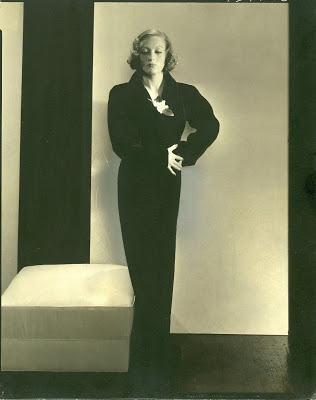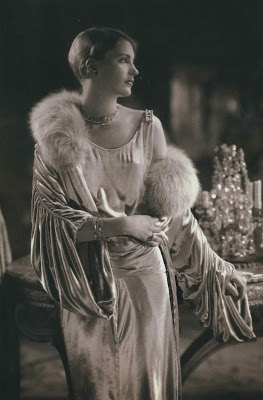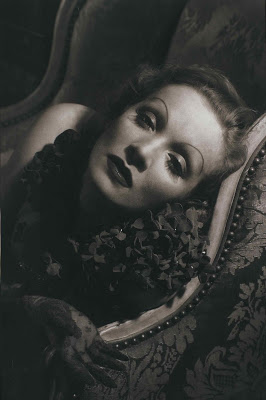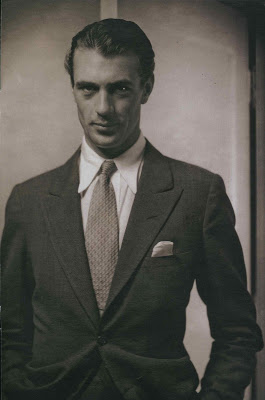 Don’t miss the Edward Steichen exhibit at the Nelson that is opening Saturday. This is not one for the kiddies (though Egypt certainly is) but better with a like-minded someone. Like someone who minds fashion or jewelry or celebrities or photography.
Don’t miss the Edward Steichen exhibit at the Nelson that is opening Saturday. This is not one for the kiddies (though Egypt certainly is) but better with a like-minded someone. Like someone who minds fashion or jewelry or celebrities or photography.
These photos are from Steichen’s Conde Nast years (1923 – 1937) and while he had made a name for himself in the art world, a divorce, the resulting need for cash and a muddled outlook (see how this all seems random, but is actually like pearls on a string?) made Conde Nast’s offer to be the chief photographer for Vogue and Vanity Fair look like a good gig.
The exhibit is beautifully installed and you can see Steichen’s quick transition away from the dreamy techniques of his predecessor, Adolph de Meyer, to a crisper, cleaner and more dramatic style. Less gray. More black and white.
As those of us who take an interest in interiors have at least a passing acquaintance with fashion and art, the exhibit will have broad appeal. While most of the shots have striking backdrops a few claim Conde Nast’s or Helena Rubinstein’s apartment as their settings. And they are something to see. Even a clothes dummy like me stared in awe at the talent of Chanel and Schiaparelli. Did I mention the jewelry?
Saturday the 15th through July 25th. I’m also planning on attending Chanel and Her Rivals: Fashion in the Age of Steichen on June 12th from 1 – 2 by fashion historian Dr. Valerie Steele of FIT. April Watson, the Associate Curator of Photography at the Nelson, gave the tour yesterday and I think you would enjoy her presentation as well. She’ll speak Friday, June 18th from 7 -8 on Steichen’s influence on fashion and glamour.
While admission to the Nelson is always free, and most of the exhibits are as well, this is a ticketed exhibit for non-members. $8 for adults, $5 for students. For more information on the exhibit and all the events, click here.
This exhibit has been organized by the Foundation for the Exhibition of Photography, Minneapolis; and the Musee de l’Elysee, Lausanne; in collaboration with The Nelson-Atkins Museum of Art, Kansas City, Mo. The exhibit here is supported by the Campbell-Calvin Fund and Elizabeth C. Bonner Charitable Trust for exhibitions. All images Edward Steichen and all are copyright Conde Nast Publications. From top, Joan Crawford wearing Schiaparelli, 1932; Lee Miller wearing a dress by Jay-Thorpe and a necklace by Marcus, 1928; Marlene Dietrich, 1934; Gary Cooper, 1930 and Ilka Chase, 1933. I have scanned the images so a few are cropped differenly than the originals.





Oh how I wish I could go. I get all dreamy and lost in these photos.
Absolutely worth a road trip.
I wish I could take a Sat. drive to KC! Books on Tape for the ride & this exhibit – the perfect Sat.
I wish I could see it. He is one of my favorite photographers.
Gary Cooper! I do love fashion, but the image of the barrel/tub chair in the bottom photo has me gasping for breath. Thanks. Mary
The barrel chair in the last photo is indeed wonderful, but don't let's ignore Miss Ika Chase, she of the fluty
voice on all those television panel shows of the 50s.
utterly gorgeous…so very blandings! (who would not want to be in kc after seeing this? a visit would be heaven)
Love Ilka Chase!
These are fabulous and make us long for the the sets and costumes that were so grand from the early films, Voques, and Vanity Fair. Thank you for the sneak peak!
Wish I were there! Gorgeous photography! Enjoy the show!
Steichen is stunning and one of my favorites together with Irving Penn, Stieglitz and other masters.
I am fascinated by B&W photography and I still use film and a Leica for my "real" photography.
I reserve digital for my business.
Your blog is stunning too!
I grew up in a little town in the middle of the Corn Belt, where the height of sophistication was having a big lamp with a shade like a square-dancer's skirt in the picture window & a gazing ball ringed with petunias in the front yard. Actually, I still like the gazing ball thing, but my developing aesthetic tastes were molded early on by the black-&-white pictures & ads in the ancient copies of House & Garden that I found in my grandmother's attic, and of all of the talented photographers whose work appearred in H&G, it was Edward Steichen's photos that mesmerized me the most.
I had no idea who any of the people in the photos were were–even if they were identified in a caption, I still had never heard of any of them–but it didn't matter because it wasn't about the people, anyway, but about the calm purity of the images themselves & about the perfect world his subjects seemed to inhabit. If I didn't recognize the subjects' names, I still got Steichen's implicit message: these people were gods & goddesses, and they lived in the closest thing to heaven that I had ever seen.
When I got to college, I took my first photography course, and with a ten-pound used Miranda camera, I tried to recreate the stark glamour of Steichen's shots, using anybody halfway good-looking that I could get to pose for me. The results were pretty awful, partly because my primitive sets were cobbled together with unstable sheets of plywood & work lights duct-taped to basketball rims & tree branches, and partly because my 'subjects' always looked somwhat stiff & ill-at ease, which, of course they were, because they never knew when a stray gust of wind would bring the whole flimsy set crashing down around them: they had to be ready to run for their lives on a second's notice. Then, too, my darkroom skills were crap, and I frequently resorted to a black magic marker to get rid of the dust spots that stood out like galaxies against the dark areas of my prints. That was considered "cheating." Whatever.
But it wasn't my primitive technique & sloppy developing that got slammed at our weekly critiques in class, it was the fact that, for some unknown reason, I was looking to a throwback like Steichen (and, to a lesser extent, to Edward Weston & Charles Sheeler) as a model. Where I looked at Steichen's immaculate images and saw perfection & all-but-heartbreaking beauty, the professor saw soullessness & falsity & tyranny, & a whole lot of other dismissive terms I forget now. Were we even looking at the same pictures?
When it became clear to me that unless I were willing to turn my back on glib superficialities & embrace Honesty & Reality–which, in 1970, meant focusing on the dirt under a hippie's nails, or a run-over squirrel in the street or some graffiti scrawled on a door–I wasn't going to get decent grades, I dropped the course. What a wuss I was. These days, of course, I know what I didn't know back then–or, at least what I wasn't either brave enough or articulate enough to say in front of the class: that the professor's worldview was every bit as parochial and, really, just as 'dishonest' as that of Edward Steichen, who at least knew he was creating an artifial world. Neither approach, of course, is truly "objective". Neither one has a lock on Reality or Truth, but here's the thing: only one has the power to move me, and when it comes to photographty, Steichen will always be the king. This sounds like a wonderful show.
Really glamorous!! A must see…
Giveaway by Beth Cosner Design is up on my site….come visit!
Karena
Art by Karena
Not random at all. Love how you followed up on the previous post. Plus, since I just happened to be at that lecture about Vogue and Conde Nast, your post adds an interesting dimension to the info I picked up. Thanks Patricia!
Magnaverde's comment is epic in the most deliriously wondrous way. It is full of gospel truth (& makes me want, suddenly, a gazing ball & perhaps even petunias).
Delightful! I'd like to wander about that exhibit.
I'll have to settle for looking into the book.
that was definitely a time of elegance